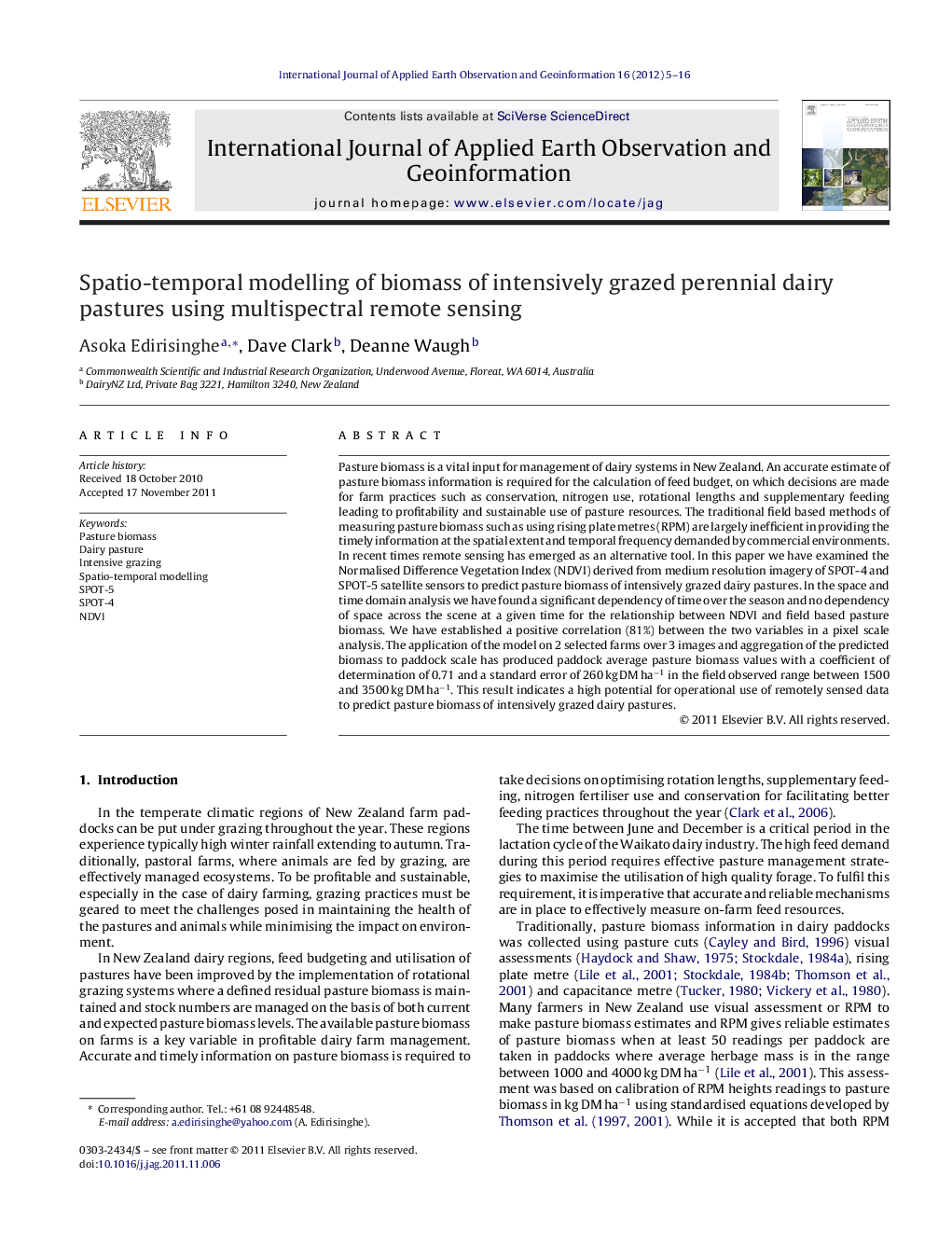| Article ID | Journal | Published Year | Pages | File Type |
|---|---|---|---|---|
| 4465003 | International Journal of Applied Earth Observation and Geoinformation | 2012 | 12 Pages |
Pasture biomass is a vital input for management of dairy systems in New Zealand. An accurate estimate of pasture biomass information is required for the calculation of feed budget, on which decisions are made for farm practices such as conservation, nitrogen use, rotational lengths and supplementary feeding leading to profitability and sustainable use of pasture resources. The traditional field based methods of measuring pasture biomass such as using rising plate metres (RPM) are largely inefficient in providing the timely information at the spatial extent and temporal frequency demanded by commercial environments. In recent times remote sensing has emerged as an alternative tool. In this paper we have examined the Normalised Difference Vegetation Index (NDVI) derived from medium resolution imagery of SPOT-4 and SPOT-5 satellite sensors to predict pasture biomass of intensively grazed dairy pastures. In the space and time domain analysis we have found a significant dependency of time over the season and no dependency of space across the scene at a given time for the relationship between NDVI and field based pasture biomass. We have established a positive correlation (81%) between the two variables in a pixel scale analysis. The application of the model on 2 selected farms over 3 images and aggregation of the predicted biomass to paddock scale has produced paddock average pasture biomass values with a coefficient of determination of 0.71 and a standard error of 260 kg DM ha−1 in the field observed range between 1500 and 3500 kg DM ha−1. This result indicates a high potential for operational use of remotely sensed data to predict pasture biomass of intensively grazed dairy pastures.
► A robust spatio-temporal field sampling protocol has been developed. ► In the space and time domain analysis only a significant dependency of time across the season is observed. ► A strong positive correlation between NDVI and biomass has been established. ► The modelled and the field observed pasture biomass agrees well with a low error. ► Highly potential spatio-temporal model for operational prediction of pasture biomass from satellite imagery is developed and successfully tested.
